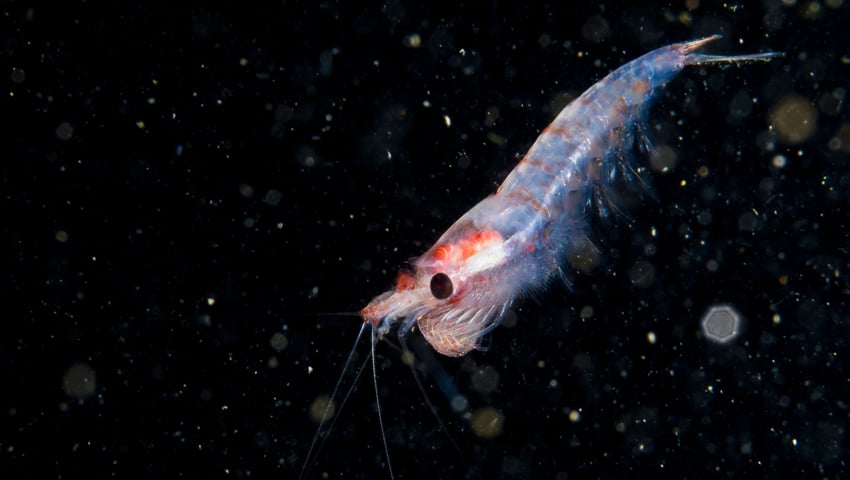WWF, the University of Strathclyde and the British Antarctic Survey (BAS) have joined forces to determine whether we can monitor Antarctic krill from space. This innovative project aims to inform decision makers and ultimately safeguard one of the planet’s most vital yet overlooked species.
Antarctic Krill may be no bigger than your little finger, but collectively they’re a powerhouse. Every day, these tiny crustaceans transfer 0.3 million tonnes of carbon to the deep ocean – equivalent to the UK’s daily CO2 emissions by eating and excreting phytoplankton and by regularly shedding their exoskeletons.
But as sea temperatures rise and krill nurseries lose their protective sea ice – essential for krill nurseries – their populations are shrinking and shifting south.
Krill are the cornerstone of the Antarctic food web above the sea floor and protecting them is critical for maintaining both biodiversity and climate stability, which is essential for the planet and for people.
The project was launched at UNFCCC COP 26 in Baku, November 2020 and Dr Cait McCarry from Strathclyde has just returned from an expedition to Antarctica where she was sampling live krill.
Krill are the centre of the Southern Ocean food web above the seabed, sustaining penguins, seals and the world’s largest animals, including blue whales. These tiny creatures are also climate heroes, transferring vast amounts of carbon to the ocean depths, helping to stabilise the planet’s climate.
The Krill from Space project uses a method to compare light patterns, combined with current and historical satellite and remote sensing data, to better understand the distribution and population of krill across time and space. It will also monitor changes in these vital creatures, nicknamed the ‘Superheroes of the Southern Ocean.’
Rod Downie, chief polar advisor at WWF-UK, said, “Antarctic Krill are the Superheroes of the Southern Ocean. These tiny, unsung heroes are the beating heart of the Southern Ocean, sustaining incredible marine life.
“They are the reason why humpback whales migrate thousands of miles every year to feed in the icy waters around Antarctica. And they are climate heroes too, playing a critical role in drawing down carbon from the ocean surface.
“But climate change and unsustainable fishing are putting them at risk. With sea ice declining and industrial fishing growing, we urgently need to better manage the fishery and protect krill habitats within a network of marine protected areas. ‘Krill from Space’ may give us a new tool to help monitor and safeguard this vital species.”
David McKee, Reader in the Department of Physics at Strathclyde, said, “Ocean colour satellites have provided daily global monitoring of the world ocean since 1997. However, it is only very recently that we have been able to identify a signal associated with the pigment that turns krill red.
“This is a ground-breaking effort to develop a new way to monitor krill swarms at the surface where they are known to occur in huge patches that are important feeding grounds for whales and other important marine species.
“We are delighted to be partnering with the WWF and BAS on this project. In time we hope to be able to support international conservation and sustainable management of this most important Antarctic species.”
